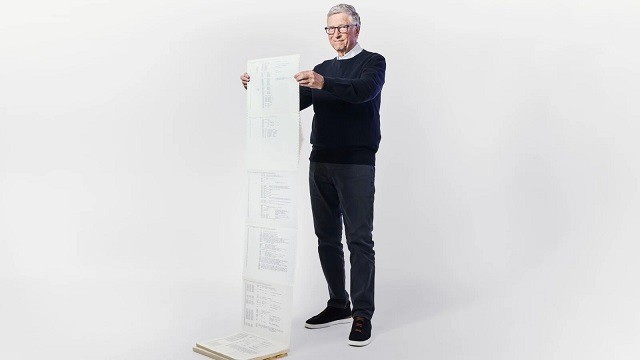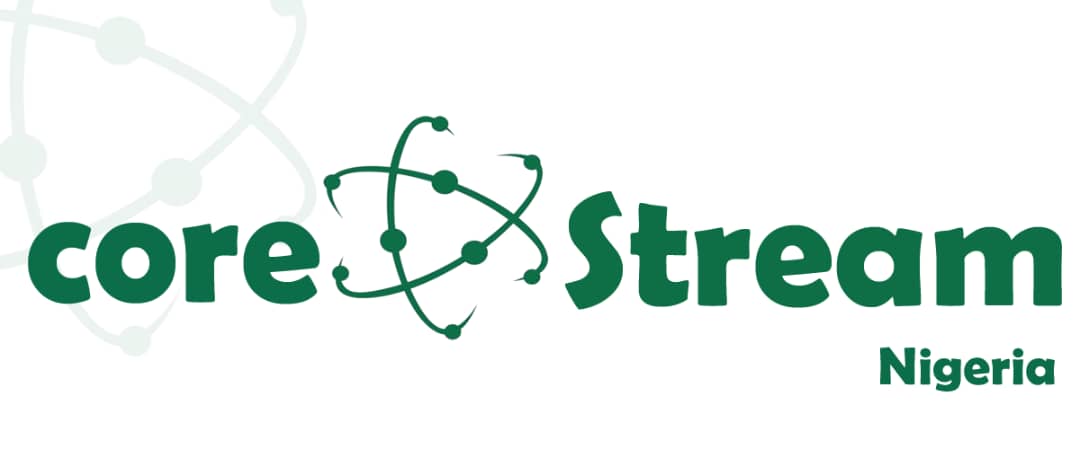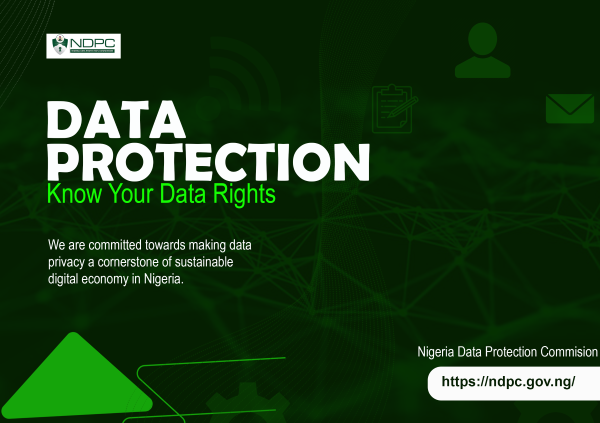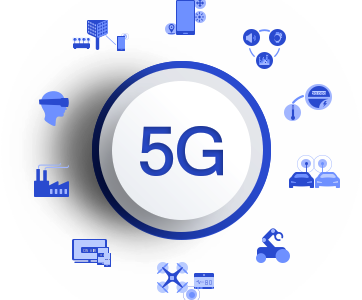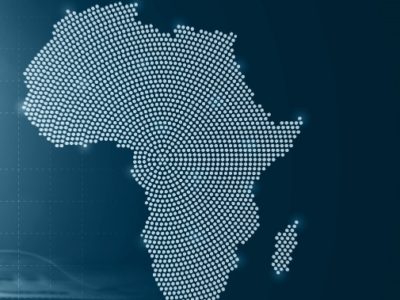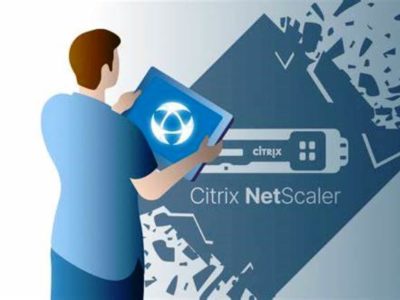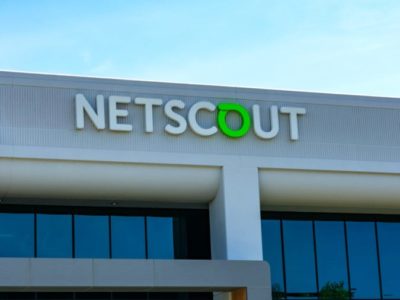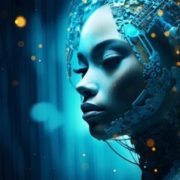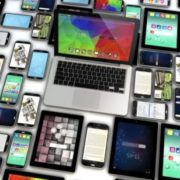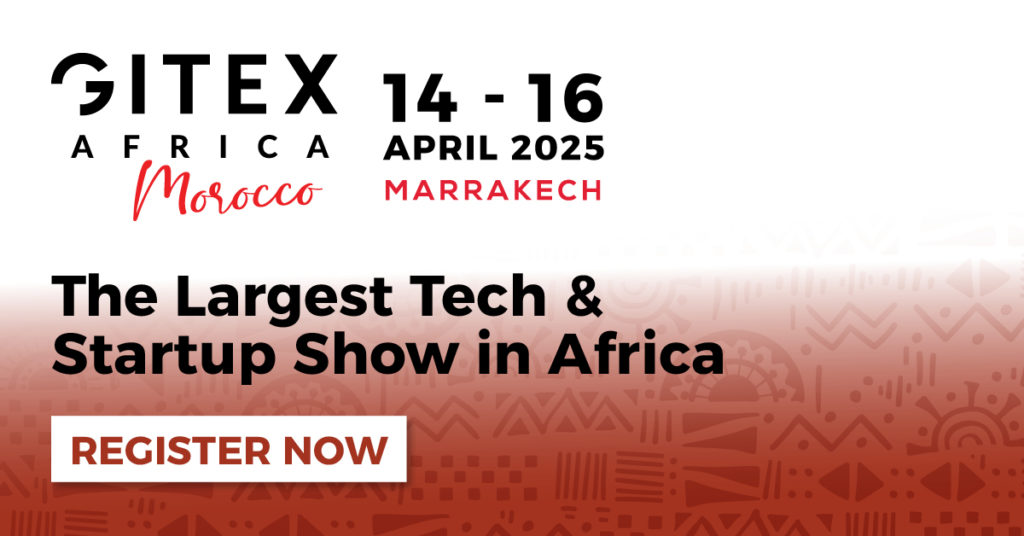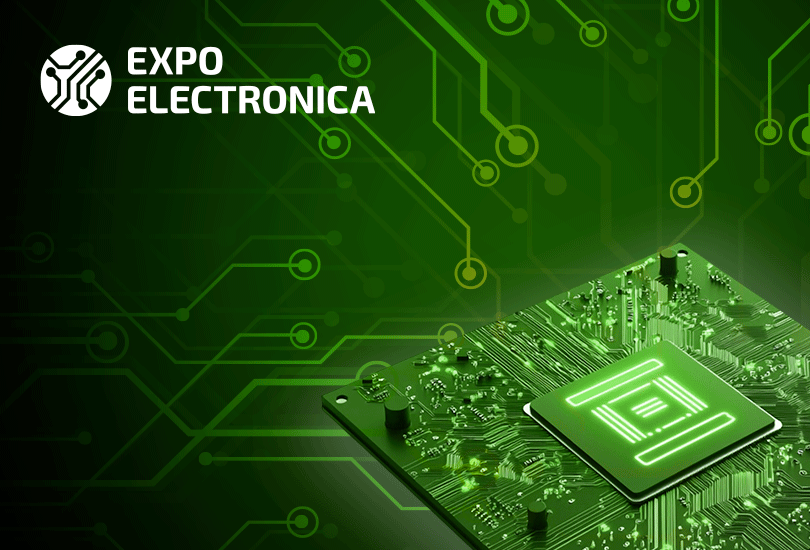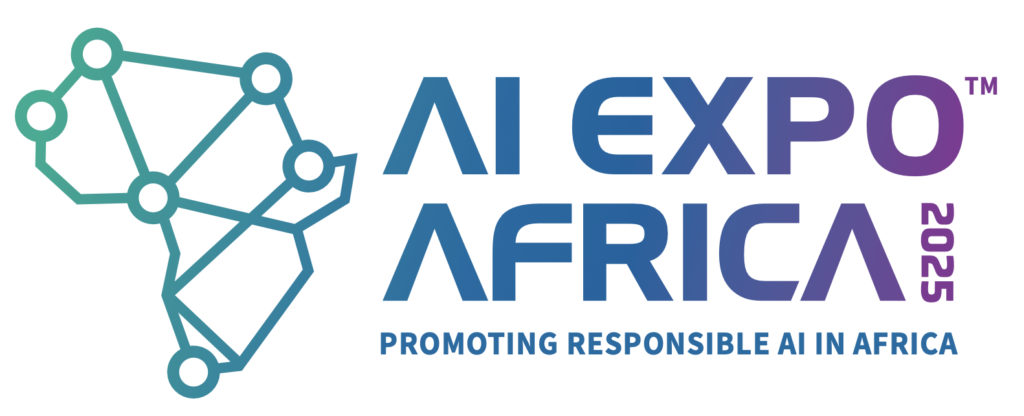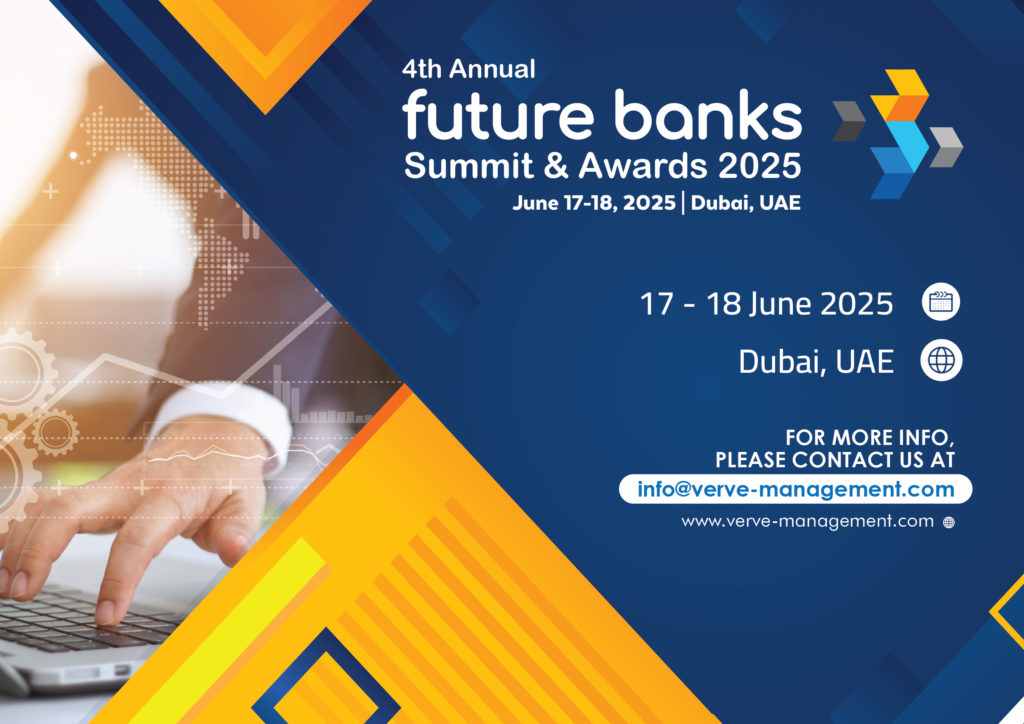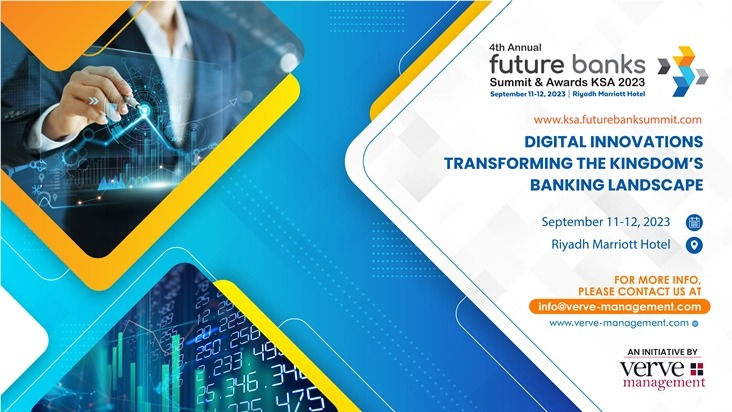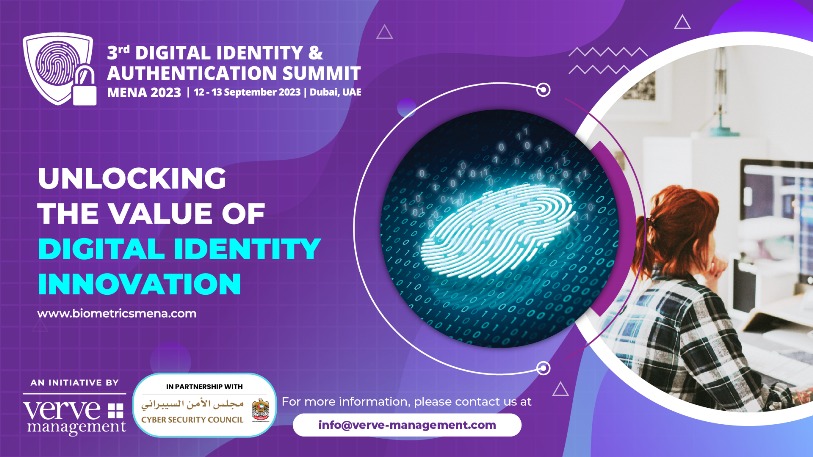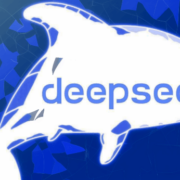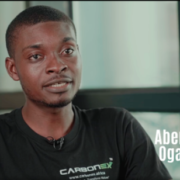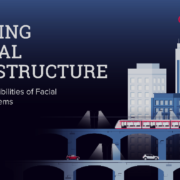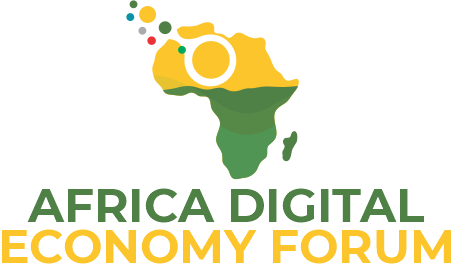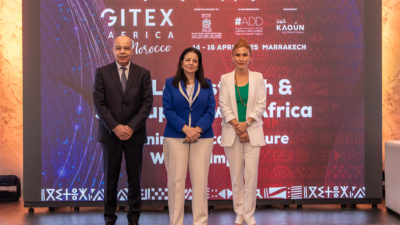By Engr. Gbolahan M.A. Alabi-Isama MS. Founder/CEO at Supercomafrica
As someone deeply intrigued by technology’s power to reshape culture, I see this moment not just as the creation of software, but as the very genesis of our modern digital world. This teletype printout, held by the iconic Bill Gates, isn’t just the original source code; it’s the birth certificate of an era. Let’s examine the evidence of this pivotal event that fundamentally transformed both our technology and our culture. While we often seek elaborate designs, true revolutions can ignite from the most unexpected sparks.
RELATED: Bill Gates leads dialogue on technology-driven solutions for Africa’s food security and healthcare
This recent photo provided by Gates Ventures shows Microsoft founder Bill Gates holding a printout of the computer coding that launched the software maker in April 1975. (Ian Allen/Gates Ventures via AP)
Gates: Name synonymous with our digital lives
Consider that image: Gates, 69, a name synonymous with our digital lives, holding what appears to be an antiquated piece of paper. Yet, those punched holes represent the foundational code, the digital DNA, written fifty years ago this month, that gave birth to Microsoft and ushered in the personal computing revolution we now take for granted. It’s a tangible link to a moment when potential became reality.
“We have software for your Altair?” – Bill Gates.
The story, supported by historical accounts and Gates’ own memories, began, as many transformative events do, with observation and opportunity. Picture January 1975: an article in Popular Electronics Magazine showcasing the Altair 8800, a kit computer powered by Intel’s then-obscure but revolutionary 8080 chip. For most, it was a mere novelty. But for the young Gates and Allen, it was a revelation – a glimpse into a future where computing power would be accessible to individuals, a future they instantly envisioned.

Digital Equipment Corporation DEC PDP-10 Mainframe
Dawn of a working BASIC Interpreter
What followed was an act of audacious ambition that defines tech legends. Fueled by this vision, they contacted Micro Instrumentation and Telemetry Systems MITS, the makers of the Altair, and their CEO, Ed Roberts. They boldly claimed to have a working BASIC Interpreter, software that would allow users to program the machine – a statement made on pure belief. This was their core idea taking form: computing for everyone. The significant challenge? They hadn’t written a single line of that promised code. The risk of utter failure was immense.
Faced with this self-imposed, high-pressure deadline, the task demanded immense ingenuity. The evidence reveals the sheer brilliance required. They needed to adapt BASIC, a relatively new language itself, for hardware they didn’t possess. Imagine that constraint: creating software without the actual machine to test it on. Their solution? Harvard’s powerful DEC PDP-10 Mainframe. This required not only programming expertise but also remarkable creativity, simulating the Altair’s behavior entirely in software, translating theory into functional code.
Original Microsoft BASIC Interpreter (Credit: Bill Gates)
Pivotal moment in the democratization of computing
When Gates calls that code “the coolest I’ve ever written,” it resonates deeply. Crucially, its impact extended far beyond the technical achievement. This code was the key, the essential software layer that transformed the Altair 8800 from a collection of parts into a usable tool. It unlocked the machine’s potential for everyday users, bridging the gap between raw hardware and human interaction. This was the pivotal moment in the democratization of computing, the point where the abstract idea of ‘personal’ computing began its journey into reality: software empowering individuals through hardware.
This directly reflects the realization of a powerful idea that unlocked everything for the user. The prevailing mindset confined computing to institutions. Gates and Allen, inspired by that magazine, embodied the emerging belief that computing could be for everyone. Their code wasn’t just text on paper;it was the embodiment of that belief, the tool that would eventually bring computers, running software like Word, Excel, and Windows, to countless desks and homes, fundamentally changing how we work and create, turning PCs into essential household items.

This recent photo provided by Gates Ventures shows Microsoft founder Bill Gates holding a printout of the computer coding that launched the software maker in April 1975. (Ian Allen/Gates Ventures via AP)
Look at that printout again. It seems deceptively simple, doesn’t it? Yet, within that seemingly “basic” code, created by a young Harvard student and his friend, lay the seed of a global industry. And so, we arrive at a compelling observation, supported by historical evidence: a Harvard freshman, Gates and his friend created the relatively “simple” code that became the foundation for a complex, future global industry (like AI).
Laying the groundwork for massive software companies
Furthermore, that initial BASIC Interpreter, designed for an early hobbyist machine, laid the groundwork for massive software companies and, indirectly, for the sophisticated artificial intelligence platforms Microsoft and others are now developing.
Consider that lineage: from those lines, printed on a teletype, grew the sprawling Microsoft empire, a multi-trillion-dollar entity now deeply involved in the intricacies of artificial intelligence. That simple code became the bedrock for an incredibly complex future.
Even Gates is astonished by the improbable success
Reflecting on this, even Gates seems astonished by the improbable success, calling the outcome “crazy that the dream came true.” It wasn’t solely about skill and ambition, though those were certainly present. There was also an undeniable element of chance: encountering that specific Popular Electronics article, Ed Roberts taking a risk on their unsolicited call, the opportune convergence of the Intel chip and the growing desire for personal computing. It reminds us that innovation flourishes where preparation, boldness, and often, a bit of luck intersect.
Fifty years later, the reverberations of that intense coding period continue to shape our world, fueling discussions about AI ethics, open source, and the very nature of digital interaction. It began with a magazine, a vision, a daring promise, and code written under pressure. It makes one wonder: what seemingly “basic” creation, being coded in a dorm room or garage today, holds the key to the next fifty years of our technological and cultural evolution?
Credit: Broadband Networker


